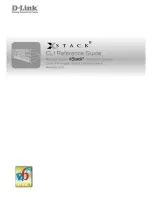
3
Features and Functions
186
Keysight 34980A Mainframe User’s Guide
compatibility with the current set of installed modules. More extensive error
checking, such as channel range expansion and validation, is performed when
the sequence is executed.
– If you define a sequence with a name already in use by another sequence, the
new definition will overwrite the previous definition (no error is generated).
– A sequence name can contain up to 30 characters. The first character must be
a letter (A-Z), but the remaining 29 characters can be letters, numbers (0-9),
or an underscore ( _ ). Blank spaces are not allowed.
– When stored in memory, the user-defined sequence names are converted to
all uppercase letters. For example, when stored “MySeq_1” is converted to
“MYSEQ_1”.
– A sequence may invoke another sequence, but may not invoke itself
recursively. In addition, the number of invocations is limited to
four
levels of
nesting and this is enforced at the time of execution. Exceeding the limit will
abort the sequence and an error will be generated.
– At the time of sequence definition, a sequence may reference another
undefined sequence; however, at the time of execution an error will be
generated if an undefined sequence is invoked.
– Up to 500 unique sequences can be stored in non-volatile memory. Each
sequence is limited to 1024 bytes.
– While a scan is running (see
on page 148), the instrument prevents
use of all channels in banks that contain one or more channels in the specified
scan list (these channels are dedicated to the scan). Therefore, if a sequence
attempts to operate a channel in a scanned bank, an error is generated and
the entire sequence will be discarded.
– If the command overlap function is enabled, all switching operations within the
sequence follow the overlapping rules. If the command overlap function is
disabled, all commands within the sequence are processed in a serial fashion
in the exact order in which they are received. Note, however, that within a
single command containing a <ch_list> parameter (e.g.,
ROUT:CLOSE
(@1001:1010)
), the order of the individual switch operations is not
guaranteed.
Remote Interface Operation:
The following command defines a sequence
named “MYSEQ_1”, which closes several channels on the module in slot 1 and
opens a single channel on the module in slot 2.
ROUT:SEQ:DEF MYSEQ_1,"ROUT:CLOS (@1001:1009);OPEN (@2001)"
















































